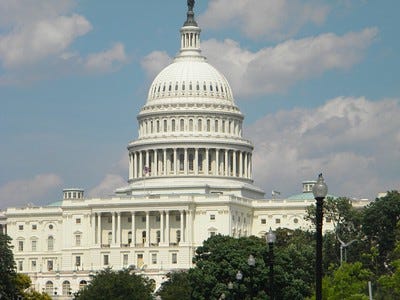Our American Government
Our American Government is a small book published by the House of Representatives for citizens and those who seek a greater understanding of the American interpretation of democracy. It follows a question-and-answer format and covers a broad range of topics dealing with the three branches of our Government, the electoral process, and the role of political parties.
The Savvy Citizen is reproducing the 169 questions-and-answers through a series of posts called Civics 101. Each post will contain the Q&A as well as some additional commentary to add historical context, fun facts, or anything we believe will add to our collective understanding of these topics.
Think of it as your adult Civics class, but without the test!
Let’s keep at it.
NEW SECTION: The Legislative Branch
Q&A #14: What is Congress?
The Congress of the United States is the legislative (lawmaking) and oversight (Government policy review) body of our National Government, and consists of two Houses—the Senate and the House of Representatives.
My Thoughts
During the Constitutional Convention, the delegates debated the proposed structure for a new legislature for some time. The debate wasn’t just over the new legislature, it was about whether the Convention even had the authority to throw out the existing Constitution, the Articles of Confederation, and the legislature it created.
The Articles of Confederation created an extremely weak central government, aka “a league of friendship,” with a unicameral legislature, so proposing a bicameral legislature was a radical change. Determining how many representatives were in each house and how they were elected was another source of controversy, given the propensity for large states to overwhelm smaller states with their voting power. Ultimately, the Convention resolved the differences in The Connecticut Compromise that created a bicameral Congress where the Senate included two Senators from each state and the House of Representatives included Representatives according to the state’s population. Each State’s legislature appointed the Senators and the people elected the Representatives.
This structure remained in place from 1789 to 1913 when the 17th Amendment changed the appointment of Senators by state legislatures to direct election by the people. This was a massive structural change in the federal legislature and remains controversial to this day.
—
Back next time with Q&A #15: What qualifications are prescribed for a Member of Congress?
Meanwhile, don’t forget that we’re organizing the post links on a single page available here.
xo,
Kelley for the Savvy Citizen Team
October 24, 2024





